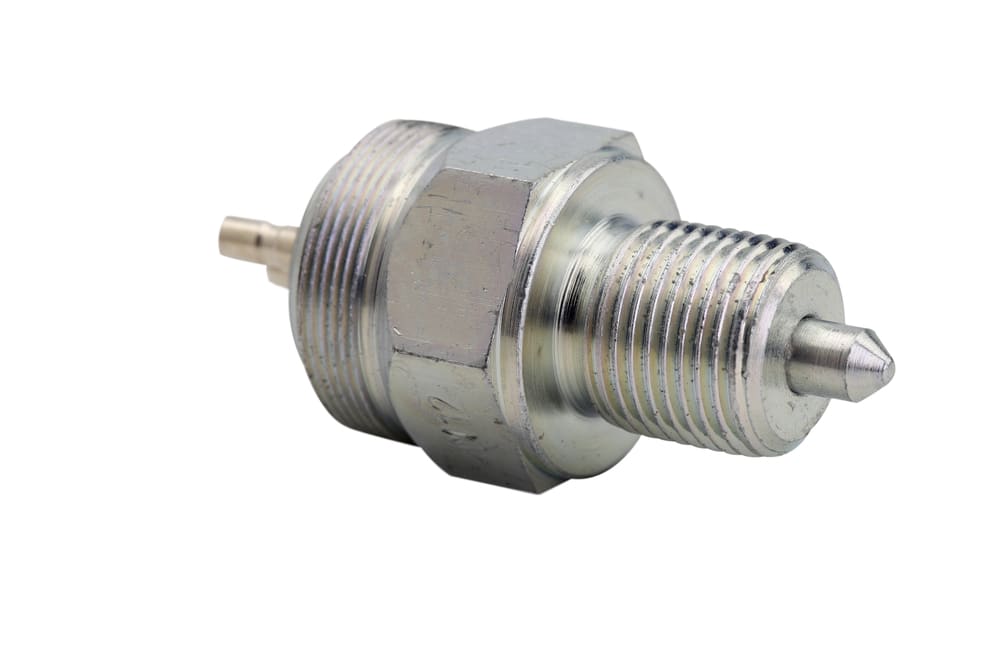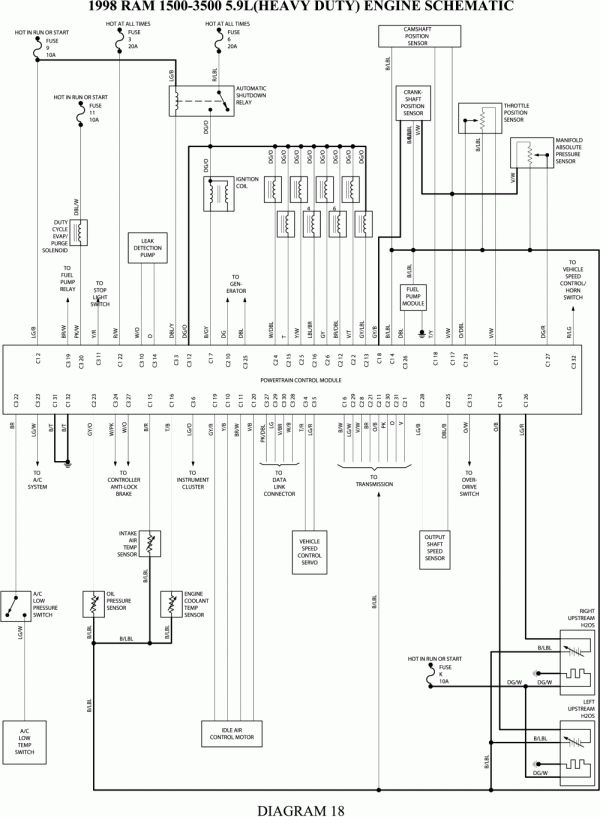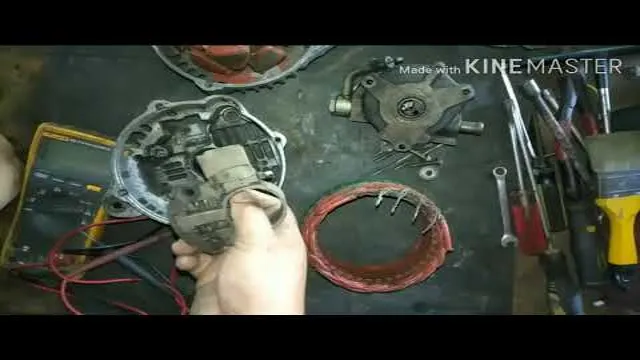Power Steering Pressure Switch Location: Top Locations and Symptoms
The power steering pressure switch is typically located on the power steering pump assembly or in the pressure line near where the rubber hose is crimped to the hard-line at the steering gearbox inlet.

Credit: m.youtube.com
Common Symptoms Of A Faulty Power Steering Pressure Switch
The power steering pressure switch’s faulty symptoms include engine slowdown when turning, idling fluctuation, and Check Engine light activation. The switch monitors hydraulic pressure during steering operations, adjusting engine RPM to manage load. Common issue locations are on the power steering pump assembly.
Engine Slow Down Or Stalling When Turning
If your power steering pressure switch is faulty, one common symptom you may experience is the engine slowing down or stalling as you turn a corner. This happens because the power steering control valves, which direct the flow of power steering fluid, are not functioning correctly. As a result, the engine load increases, causing a decrease in speed or even engine stall. This can be a concerning and potentially dangerous situation, as it can affect your ability to control the vehicle properly.
Engine Speed Fluctuations At Idle
Another sign of a faulty power steering pressure switch is engine speed fluctuations at idle. When your vehicle is stationary and the engine is running, you may notice that the engine speed either increases or decreases intermittently. This happens because the power steering system is not receiving accurate signals from the pressure switch, causing it to adjust the engine RPM incorrectly. These fluctuations can disrupt the smooth operation of the engine, leading to a rough idle and potentially affecting the overall performance of the vehicle.
Activation Of Check Engine Light
If your power steering pressure switch is malfunctioning, it may trigger the activation of the Check Engine light on your dashboard. The pressure switch is a crucial component for the engine management system as it monitors the hydraulic pressure generated during steering maneuvers. When it fails to provide accurate readings, it can send incorrect signals to the Powertrain Control Module (PCM). As a result, the PCM may detect an abnormality in the system and illuminate the Check Engine light as a warning. It is important not to ignore this warning and have your vehicle inspected by a professional as soon as possible.

Credit: m.youtube.com
Function Of Power Steering Pressure Switch
The power steering pressure switch is typically located on the power steering pump assembly. It monitors the increased hydraulic pressure when the steering wheel is rotated, allowing the engine RPM to adjust accordingly. If the switch fails, symptoms may include engine slowdown or stalling, fluctuating idle speed, or activation of the Check Engine light.
Monitoring Hydraulic Pressure Increase
The power steering pressure switch plays an essential role in monitoring the hydraulic pressure increase in your vehicle’s power steering system. As the steering wheel is rotated or held in a steering assist position, the power steering control valves direct the flow of power steering fluid to the right areas. This increased hydraulic pressure is detected by the pressure switch. The pressure switch then sends a signal to the Powertrain Control Module (PCM) or Engine Control Unit (ECU), allowing it to adjust the engine’s RPM to compensate for the increased engine load. This ensures that the engine provides the necessary power to deliver smooth and effortless steering assist. Without the pressure switch, the engine might not be able to accurately adjust itself, leading to poor steering performance.Adjusting Engine Rpm For Steering Assist
One of the key functions of the power steering pressure switch is to adjust the engine’s RPM specifically for steering assist. By monitoring the hydraulic pressure increase, the pressure switch provides crucial information to the PCM or ECU, enabling it to make necessary adjustments. When you turn the wheel and activate the power steering system, the pressure switch detects the increased hydraulic pressure. This prompts the PCM or ECU to raise the engine’s RPM, compensating for the added workload caused by the power steering system. As a result, the engine can maintain its performance and prevent any significant drop in power or stalling. On the other hand, when the steering wheel is returned to the center position or the steering assist is no longer required, the pressure switch sends a signal to the PCM or ECU to restore the engine’s RPM to its normal levels. This intelligent adjustment ensures that the engine operates efficiently and optimally, helping to preserve fuel economy and extend the lifespan of essential engine components. Overall, the power steering pressure switch plays a crucial role in the smooth functioning of your power steering system by effectively monitoring hydraulic pressure increase and allowing the engine to adjust its RPM accordingly. This ensures that you can enjoy effortless steering control while maintaining the performance and longevity of your vehicle’s engine.Signs Of A Bad Power Steering Pressure Sensor
The location of the power steering pressure switch may vary, but if you’re experiencing symptoms such as engine slow down or stalling during turns, engine speed fluctuations at idle, or a Check Engine light, it could be a sign of a faulty power steering pressure sensor.
Proper diagnosis and replacement may be necessary.
Diagnosis Through Symptoms
Signs of a Bad Power Steering Pressure Sensor: If the sensor fails, symptoms can include the engine slowing down or stalling during cornering, speed fluctuations at idle, or activation of the Check Engine light.
Identifying Corrosion
If you see any unusual colors on the pressure switch, it indicates corrosion and will require immediate attention to prevent further damage.
Location Of Pressure Switch
The pressure switch for power steering is typically located in the power steering system, often near the steering pump or in the pressure line. Consult your vehicle’s manual for exact placement.
Common Locations Of Power Steering Pressure Switch
Common locations of the power steering pressure switch include on the power steering pump assembly. This sensor helps monitor hydraulic pressure changes when steering, allowing adjustments for engine load. If faulty, symptoms may include engine speed fluctuations or the Check Engine light coming on.
On Power Steering Pump Assembly
The power steering pressure switch is commonly found mounted on the power steering pump assembly. This location enables the sensor to monitor the hydraulic pressure within the power steering system accurately. Using this data, the switch can effectively communicate with the engine management system to make adjustments as needed.
Mounting On Pressure Line Near Gearbox Inlet
Another frequent placement for the power steering pressure switch is on the pressure line near the gearbox inlet. This strategic location allows the sensor to measure the pressure of the power steering fluid as it enters the steering gearbox, providing crucial data for the proper functioning of the power steering system.
Steps To Replace Power Steering Pressure Switch
When it comes to maintaining your car’s power steering system, the power steering pressure switch plays a crucial role. This switch helps monitor the hydraulic pressure within the power steering system and communicates with the engine control unit to make necessary adjustments. Over time, the pressure switch may wear out or malfunction, requiring replacement. Below, we’ll discuss the steps involved in replacing the power steering pressure switch and the tools you’ll need for the task.
Tools Required For Replacement
- Socket wrench set
- Adjustable wrench
- Power steering pressure switch replacement
- Safety glasses
Loosening And Removing Old Switch
To begin, ensure the engine is turned off, and the key is removed from the ignition. Locate the power steering pressure switch, typically found near the power steering pump or on the power steering hose. Use the appropriate socket wrench to loosen the retaining bolt of the old switch. Then, carefully detach the electrical connector from the switch by gently squeezing the locking tab and pulling it away. Once disconnected, use the socket wrench to remove the old pressure switch.
Installing And Securing New Pressure Switch
Before installing the new pressure switch, verify that the sealing surface is clean and free of debris. Apply a small amount of power steering fluid to the O-ring of the replacement switch to ensure a proper seal. Insert the new switch into the mounting location and secure it using the socket wrench. Re-attach the electrical connector to the new switch until it clicks into place. Finally, double-check the tightness of the retaining bolt to ensure the switch is securely fastened.

Credit: www.yourmechanic.com
Frequently Asked Questions Of Power Steering Pressure Switch Location
How Do You Know If You Have A Faulty Power Steering Pressure Switch?
If the power steering pressure switch fails, you may notice engine slowing/stalling while turning, idling issues, and active Check Engine light.
What Does The Pressure Switch Do On A Power Steering Pump?
The power steering pressure switch monitors increased hydraulic pressure when the steering wheel is rotated, allowing the engine management system to adjust RPM and compensate for the increased load.
What Are The Symptoms Of A Bad Power Steering Sensor?
Symptoms of a bad power steering sensor include engine stalling when turning, idle speed fluctuation, and Check Engine light activation.
What Is The Code For The Power Steering Pressure Switch?
The code for the power steering pressure switch varies depending on the vehicle make and model. It is best to refer to the manufacturer’s documentation or consult a professional mechanic for the specific code for your car. A faulty power steering pressure switch may cause engine slowdown, stalling, irregular engine speed, or activation of the Check Engine light.
Power Steering Switches are commonly located on the power steering pump assembly.
Conclusion
The power steering pressure switch location is crucial for diagnosing issues efficiently. Keep an eye on symptoms like engine stalling or acceleration irregularities. Proper maintenance and timely replacement can ensure smooth steering performance. Stay informed about the signs of a faulty power steering pressure switch to avoid any complications.






